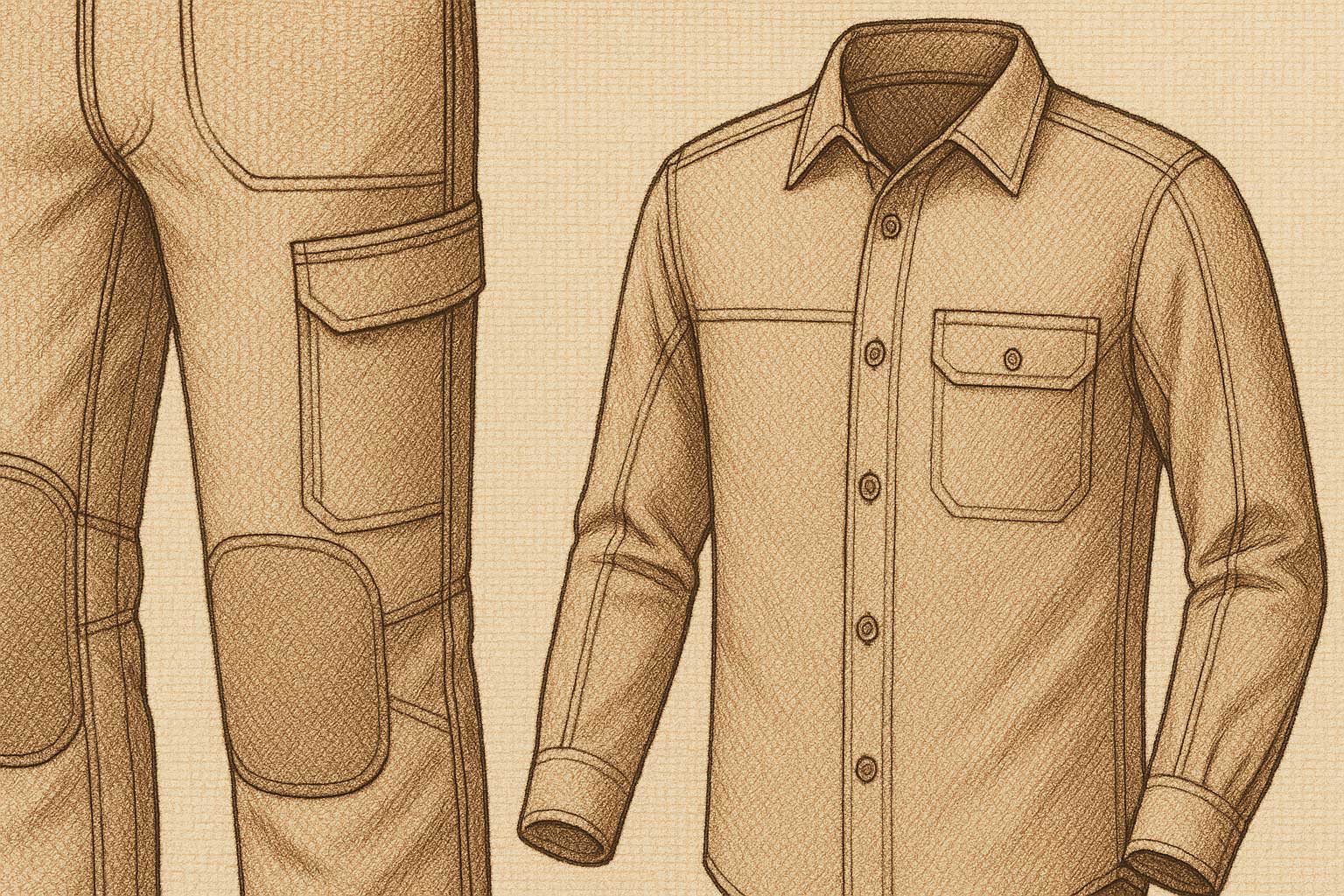In the uniform apparel industry, where garments must stand up to industrial-speed laundering, heavy wear, and the rigors of dynamic jobs, structural design is not just a nice-to-have, it is mission-critical. The way a garment is constructed, its “skeleton,” directly impacts its longevity in heavy duty work settings, without compromising the comfort the wearer needs. A garment can “appear” durable on the outside, it is the construction and “bones” of the garment that count.
Durability in apparel is not solely about using the toughest fabric, it is about how the garment is built: seam placement, reinforcement in high-stress zones, appropriate stitch type, and fabric layering. For example, a basic pair of pants used in a warehouse will repeatedly face abrasion at the knees, friction on the seat, and strain within the rise and pocket areas. Good structural design anticipates these stress points and reinforces them, whether through bar-tacks, double-stitching, or overlays of higher-density fabric.
Fabric constructions such as ripstop (a reinforcement weave) and twill are commonly used in heavy-duty workwear. When designing for industrial or uniform applications, the more seams and joining points you have, the more potential failure points you create. Thoughtful design reduces unnecessary seams and refocuses reinforcement where it counts.
Heavy reinforcement alone can make a garment stiff, bulky or uncomfortable, which is unacceptable when workers must wear the uniform for long shifts, move, bend, lift, or climb. Structural design must therefore balance reinforcement with mobility, breathability, and fit.
From a comfort standpoint, features such as articulated knees, gussets in the crotch or underarm, relaxed patterns in key movement areas, and appropriate fabric weight all play a role. The structure must support motion rather than hinder it. Uniform designers must think about “durable” and “wearer-friendly” at the same time.
Here are actionable structural design strategies.
- High-stress zone reinforcement: elbows, knees, seat, pocket edges. Use heavier weave, taped seams, or twill overlays.
- Seam design & placement: Avoid placing major seams in zones with high abrasion (e.g., shoulders and knees). Use flat-felled or bound seams to reduce snagging.
- Layering & hybrid construction: For work jackets, use a shell layer for durability with a comfort layer for ease of movement. The structure must allow perspiration escape and comfort within.
- Articulation and ergonomics: Incorporate darting, pleats, or gussets so the uniform moves naturally with the body, reducing stress loads on seams and fabric from forced motion.
- Fit-for‐purpose patterning: A too-tight uniform will over-strain seams and fabric; too loose may snag and flap. Structural design must integrate appropriate ease (movement allowance) with uniformity of appearance.
- Fabric-structure balance: Choose fabric constructions that support durability (dense weave, abrasion‐resistant yarns) but finish the yarns, so they remain breathable, wrinkle-resistant and comfortable.
Beyond the performance during use, structural design heavily influences the garment’s lifecycle and value for the client. A uniform that fails prematurely is costlier (replacement, downtime, rebranding). Moreover, good structural design contributes to sustainability, less frequent replacement, fewer repairs, less waste.
The lifecycle of apparel starts at the design phase. So, when you design or specify uniforms for industrial use (maintenance crews, hospitality, manufacturing, logistics), anchor your specification sheet around structural integrity and wearer comfort.
A uniform that is built for durability must start with structural design, not just fabric choice. At the same time, it must respect the wearer: fit, mobility, comfort and breathability. High-stress reinforcement, well-placed seams, ergonomic patterning, fabric-structure synergy: these are the markers of a uniform ready for industrial duty and movement.




















